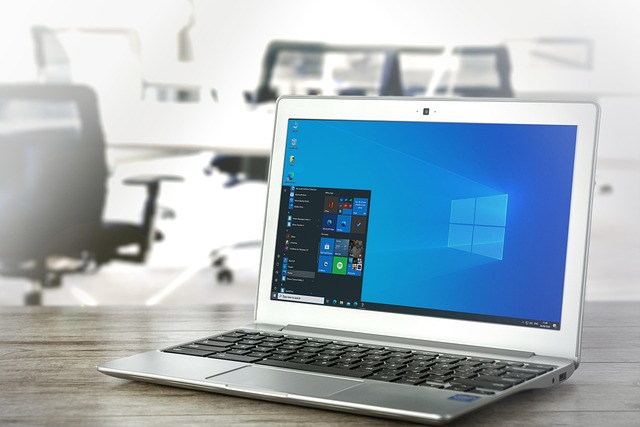
Revolutionizing IT Innovative Hardware for the Digital Age
The landscape of information technology has been reshaped by a relentless pursuit of better hardware. From the early days of vacuum tubes to today’s silicon chips that pack billions of transistors into a few centimeters, each breakthrough has unlocked new possibilities. The current era is defined by an unprecedented blend of speed, efficiency, and intelligence, all driven by the core principle of innovation. As businesses, researchers, and everyday users demand more from their devices, the hardware that supports them must continue to evolve, offering higher performance while consuming fewer resources.
The Evolution of IT Hardware
The trajectory of hardware innovation began with mechanical relays and soon advanced to the first vacuum tubes that powered early computers. The transition to transistors in the 1950s marked a critical leap, reducing size and improving reliability. The 1970s introduced integrated circuits, allowing thousands of transistors onto a single chip and setting the stage for the personal computer revolution. The 1990s brought about the microprocessor boom, with Intel’s Pentium and AMD’s Athlon leading the charge. Today’s processors, such as the ARM Cortex and x86-64, are optimized for both high throughput and low power consumption, making them indispensable in everything from servers to wearables. Each milestone reflects a culture of relentless experimentation, underscoring how innovation can redefine what is possible.
Core Technologies Driving Innovation
- FinFET and 3D‑Stacked Silicon: These fabrication techniques enable transistors to shrink beyond the limits of traditional planar designs, allowing manufacturers to pack more logic into less space while reducing leakage currents.
- Advanced Packaging: System‑in‑Package (SiP) and Chip‑on‑Board (CoB) solutions integrate multiple chips into a single module, reducing interconnect delays and enhancing overall performance.
- Graphene and Other 2D Materials: Researchers are exploring ultra‑thin, high‑conductivity layers that promise faster data transfer speeds and lower power consumption compared to conventional silicon.
- Quantum Bits (Qubits): Quantum processors use entanglement and superposition to perform calculations that would take classical machines millennia, marking a new frontier for computational innovation.
Impact on Cloud Computing
Cloud infrastructures rely heavily on high‑performance servers that can handle massive workloads while maintaining energy efficiency. Innovations such as server‑level virtualization, dynamic scaling, and hardware‑accelerated networking have made it possible to deliver services with lower latency and higher reliability. Modern data centers now incorporate AI‑driven management tools that predict hardware failures and optimize cooling, further reducing operational costs. By continuously evolving hardware to meet the demands of cloud workloads, the industry can support an ever‑growing ecosystem of services—from streaming and gaming to scientific simulations—without compromising on speed or sustainability.
Edge Computing and IoT
- Low‑Power, High‑Performance Processors: Edge devices now feature processors that balance computational intensity with power constraints, enabling real‑time analytics closer to the data source.
- Secure, Hardware‑Based Trust Anchors: Trusted Platform Modules (TPMs) and secure enclaves ensure that sensitive data remains protected even on distributed devices.
- Mesh Networking Chips: New radio technologies allow billions of IoT nodes to communicate seamlessly, creating resilient networks that support autonomous systems.
Artificial Intelligence and Specialized Hardware
The explosion of machine learning has accelerated the need for specialized processors designed specifically for AI workloads. Graphics Processing Units (GPUs) pioneered this shift by offering massively parallel compute units, but the next wave includes Tensor Processing Units (TPUs), Neural Engine chips, and Field‑Programmable Gate Arrays (FPGAs). These devices deliver higher throughput for tasks like image recognition, natural language processing, and reinforcement learning while consuming less power than traditional CPUs. The synergy between hardware innovation and AI software has opened new frontiers in areas such as autonomous vehicles, personalized medicine, and real‑time translation, proving that a well‑designed chip can be the engine behind transformative applications.
“Innovation in hardware is no longer a luxury; it is a prerequisite for the next generation of intelligent systems.” — Industry Analyst
Sustainable Hardware Development
As the demand for powerful devices grows, so does the environmental impact of manufacturing, deploying, and disposing of hardware. Sustainable design principles—such as using recycled aluminum, reducing toxic substances, and improving energy efficiency—are becoming integral to the innovation process. Companies are adopting modular architectures that allow easy repair and component replacement, extending the lifecycle of devices. Additionally, advances in low‑temperature manufacturing techniques reduce the energy required to fabricate chips, lowering the carbon footprint of each silicon die. By aligning innovation with sustainability, the hardware sector can deliver cutting‑edge performance while respecting planetary limits.
Challenges and Future Directions
- Heat Dissipation: As transistor density continues to climb, managing thermal output becomes critical. Researchers are exploring advanced cooling methods, such as liquid immersion and graphene‑based heat spreaders, to keep devices within safe operating temperatures.
- Supply Chain Resilience: Geopolitical tensions and natural disasters threaten the stability of component supply. Diversifying fabrication facilities and investing in domestic manufacturing capabilities are essential to sustain innovation momentum.
- Security by Design: With increasing connectivity, hardware must incorporate robust security features from the ground up. This includes secure boot processes, tamper‑evident packaging, and hardware random number generators that protect against emerging cyber threats.
- Standardization of Emerging Technologies: The rapid introduction of new materials and architectures demands industry‑wide standards to ensure interoperability and accelerate adoption.
- Integration of Quantum and Classical Systems: Bridging the gap between quantum processors and classical infrastructure will require new interface protocols and error‑correction strategies, presenting a significant technical hurdle.
Conclusion
Innovation in hardware is the cornerstone of modern information technology, driving progress across cloud, edge, AI, and sustainability domains. The relentless refinement of silicon, packaging, and materials continues to push the boundaries of what devices can achieve, enabling applications that were once the stuff of science fiction. By addressing challenges such as heat, supply chains, and security, the industry can ensure that the next wave of hardware innovation remains both powerful and responsible. As we look ahead, the convergence of new physical principles with sophisticated design will open doors to unprecedented computational possibilities, shaping a digital future that is faster, smarter, and greener.



